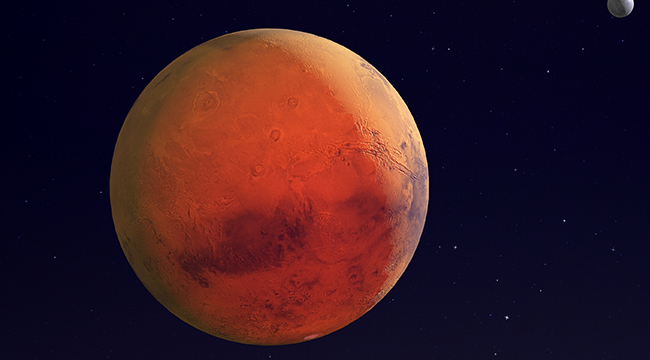
Going to Mars is increasingly the dream of just about everyone in the space arena — from NASA to Elon Musk. But getting there is the “easy” part. The bigger questions are: 1) what will happen when we arrive, and 2) how will we get back (without help from Matt Damon)?
A new Mars discovery — massive sheets of ice located right beneath the red planet’s surface — has just made the answers to those questions much easier to answer. Here’s what’s the whole find boils down to:
- Going to Mars is all about water: There are all the obvious reasons we need water, of course, but another one is for rocket fuel. See, the fuel rockets need is heavy, and the heavier you are, the harder it is to get off this rock. If you have to bring enough fuel not just to go to Mars but to come back, well, that makes it even harder. Remember the giant tank on the space shuttle missions? That giant orange tank, which weighed nearly 30 tons empty, was just to get the shuttle out of the atmosphere. Imaging lugging two of those things, and you begin to see the problem.
- Wherever you have water, you have rocket fuel: A water molecule is just two hydrogens and an oxygen, and splitting them up is relatively easy, provided you have water and some basic materials. So far, the plan has been to use the Moon as a giant fueling station. But if we could do that on Mars itself? Even better.
- We know there’s water on Mars, in the form of ice, but it was a question of quality: Keep in mind water is rarely just water. The more stuff in water, the more work goes into refining the rocket fuel, and beyond a certain point, it’s futile. So one of the pressing questions of Mars is how high-quality its water is. Similarly, nobody was entirely sure how deep we’d have to dig to get at it. Until now, that is.
- Fortunately, we’ve got eyes on Mars, and it has a lot of high-quality water that’s easy to dig up: USGS geologist Colin Dundas and the NASA team used a powerful camera on the Mars Reconnaissance Orbiter to look for regions where the topsoil had worn away, and to look at the ice. Dundas got a lot of good news; the ice is close to the surface, sometimes as close as three feet, and a lot of it is high-quality water that will be easy to make into fuel, no stops at the Moon needed.
- It’s not all good news, though: The ice deposits Dundas found were more northerly than any Mars mission would normally travel, since Mars is freezing cold even at its warmest spots. So the question remains as to where the ice is in the regions nearer to the equator. NASA will either need an answer to that question, or figure out how to get the northern ice to the astronauts.
Still, this is very good news for fans of Mars, not least because it makes any Mars mission safer and more feasible. We won’t be going to Mars tomorrow on the back of this discovery, but it just got a lot more likely.
